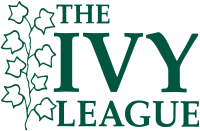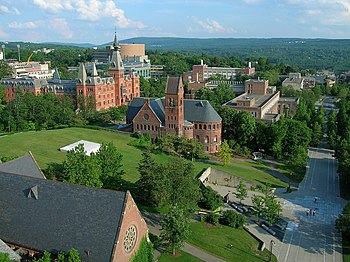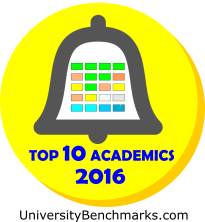Rank - Overall rank based on the average of the ranking fields (Scores, Difficulty, Smartest, Brainpower, Faculty and Research).
Scores - SAT & ACT scores. The university's test scores are corrected for dropout rate when score level is Good, Excellent or Elite. This will slightly boost scores for highly competitive schools.
Difficulty - Academic rigor is estimated based on how difficult it is to get an "A" at the university. An estimated GPA at the university is calculated for the average US Student. University grade inflation, average GPA, and STEM density are factors.
Smartest - University that can field the highest scoring students based on the average US University size. Higher Smartest Rank = "Smartest for the Average University"
Brainpower - The average "smartest" rank using 5 reference populations (CalTech, MIT, Stanford, GaTech and Berkeley). Higher Brainpower Rank = "Higher Density of Smart Students". The university ranked higher can mathematically field 'X' number of smarter students than universities ranked below them.
Faculty - Ranking based on number of % of faculty with awards and academy membership.
Research - Ranking is achieved by iteratively ranking the average of 3 research metrics (r-pop, r-stem, r-other ). The lowest ranked college is then removed and the new set is re-ranked. The result is the schools with potentially the strongest research environments per student bubble up to the top regardless of size or research budget.
- r-pop - Average research spending for student population
- r-stem - STEM research spending
- r-other - Other/Medical/Health research spending
Salary ROI - "Salary Return on Investment" is not used in the overall ranking but is provided for additional information. Using the undergraduate average starting and mid-career salaries, the rank is based on a 20yr salary accumulation (with raises) minus the cost of a 4 year education at the university. Salaries are normalized across the country using the average COLA for the university's geo-economic region (7 regions total). The COLA effect is diminished by the level of the university. Elite, Excellent and Good universities have a greater distribution of graduates across the country and a diminishing COLA effect. The resultant value would be the graduate's spending potential over the 20yr period.
Overall ROI - "Overall Return on Investment" is not used in the overall ranking but is provided for additional information. The average of Overall Rank and Salary ROI. This would be the "Best academic bang for the buck". Colleges that produce the best education, at the best price, with the best return will be ranked higher.
Color Key - ranks are colorized as follows
1
2
3
4
5
6
7
8
9
10
50
100

.png)





















%2C_1907_ICAA_point_winners_UPenn.jpg/220px-Track_(men%27s)%2C_1907_ICAA_point_winners_UPenn.jpg)











